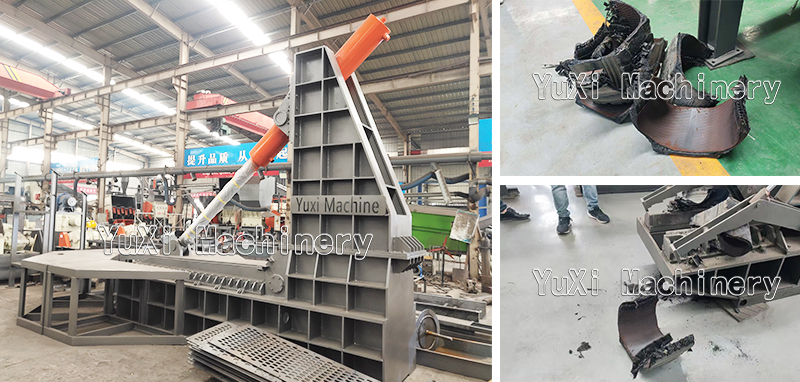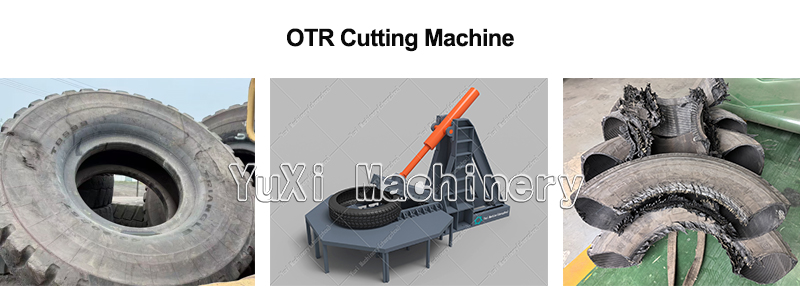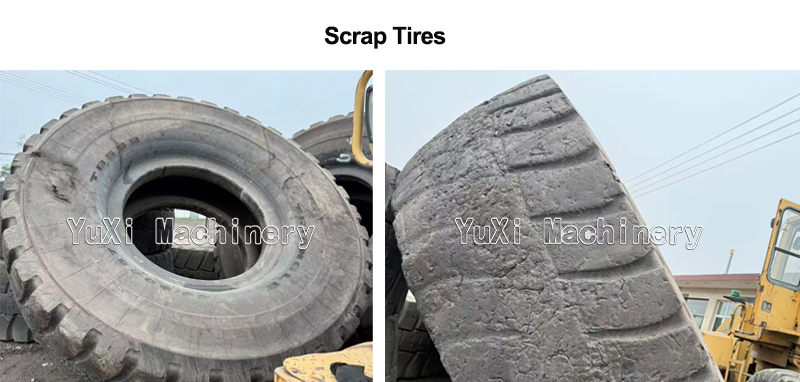Every year, more than 1.5 billion scrap tires are produced globally. Improper disposal not only occupies land but also causes long-term pollution. The advent of hydraulic tire cutting machines has transformed these “black wastes” into valuable resources. As a core preprocessing equipment in scrap tire recycling, it is reshaping the industry landscape with its powerful performance and driving the development of environmental protection and resource reuse.

A hydraulic tire cutting machine is preprocessing equipment designed for large, high-strength scrap tires. It uses a powerful hydraulic system to cut entire tires into uniformly sized strips, paving the way for subsequent processes. Its core components include:
(I) Application Scenarios
Professional scrap tire recycling plants, rubber recycling enterprises, construction waste disposal sites, and large-scale operations such as mines and construction sites can all use it to improve processing efficiency and reduce costs.
(II) Processing Objects
It covers all-steel radial truck tires, engineering tires for excavators/loaders, large agricultural tires, as well as difficult-to-process tires such as scrap aircraft tires and special vehicle tires.

The equipment uses a hydraulic system as its power core, converting mechanical energy into hydraulic energy and applying strong shearing force through the cutting blade to complete the cutting. The detailed process is as follows:
(I) Core Advantages
(II) Industry Value
It promotes the transformation of the tire recycling industry from “small workshop-style” to “industrialized and intelligent”; promotes the recycling of resources such as rubber and steel wire, alleviating resource shortages; reduces environmental pollution and supports the “dual carbon” goals; drives the development of upstream and downstream industries, creating economic value and employment opportunities.

(I) Future Trends
It will integrate IoT and artificial intelligence technologies to achieve intelligent adaptive cutting and remote monitoring; simultaneously develop towards high efficiency and energy saving, multi-function integration, and the coexistence of large-scale and miniaturized models.
(II) Purchasing Recommendations
Clarify processing needs and choose equipment with appropriate production capacity based on recycling scale and tire type; prioritize brands with high-quality core components and perfect after-sales service to ensure stable equipment operation.
Although the hydraulic tire cutting machine is just one part of the recycling industry chain, it bears the great mission of resource circulation. In the future, it will become an important engine of the circular economy with a smarter and more efficient posture, helping to build a green and sustainable future.